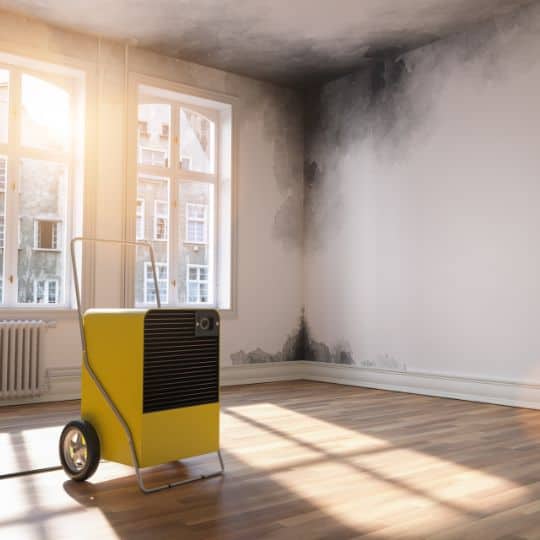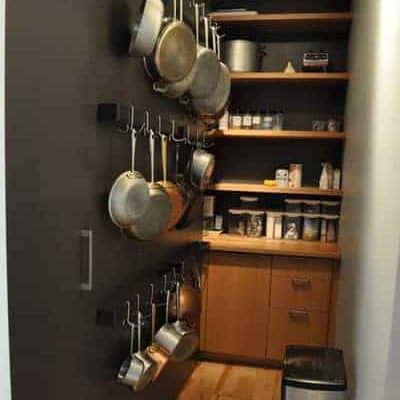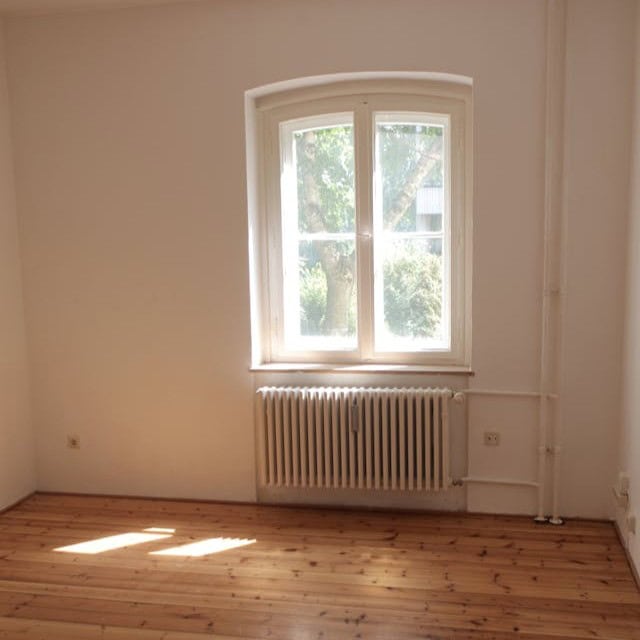
Renovation Final Inspection and Sign Off
Table of Contents
After months of planning, designing and new construction project, you’re finally ready to take the last step the final inspection required and sign-off. The vision of transforming your living space into something better is exciting, but it’s the process of getting there that can be challenging. This crucial step ensures that your renovation project meets the quality standards you envisioned.

The Purpose of a Final Inspection
The purpose of a final required inspections in any renovation project cannot be overstated. It plays a vital role in ensuring that the work has been completed according to approved plans, building code requirements and regulations. Beyond just checking for compliance, a final inspection report is the last opportunity to catch any potential issues or defects before the project is considered complete.
A renovation final inspection phase of construction serves several essential purposes, all geared towards sign-off to ensure that the work meets the desired standards. These purposes include:
Compliance with Codes and Regulations

Building codes and regulations are in place to ensure there are no safety issues and to support the integrity of a structure. The final building inspections ensures that the renovation work adheres to these rules and serves also as quality assurance. Even if all building official codes have been followed, it doesn’t necessarily ensure that everything has been done to high standards. Building Inspectors are trained professionals who can spot even minor deviations or shortcuts taken during construction work. By conducting a meticulous examination at this stage, they ensure that every detail meets predetermined specifications and guarantees exceptional quality for years to come.
Quality Assurance

One of the primary objectives of a final inspection at this stage of construction is to guarantee safety and quality assurance. By thoroughly examining every aspect of the renovation, from structural changes to electrical work and plumbing systems, inspectors are able to identify and rectify any subpar work that may pose risks down the line. This critical evaluation not only protects the homeowners from potential hazards but also safeguards contractors from liability claims related to faulty craftsmanship.
Style and Functionality
During the final inspection of a renovation or remodelling large project, one key aspect that is often overlooked is the balance between style and functionality of the house plan. It’s easy to get caught up in the excitement of updating the style of a space, but it’s equally important to consider and ask general questions as to how well it will serve its purpose. After all, what good is a beautifully designed room if it doesn’t meet your needs? Functionality should be at the forefront of any design decision, ensuring that every element of the space not only works but works harmoniously together.
Style doesn’t have to compromise functionality. In fact, they can go hand-in-hand to create an exceptional living experience. A well-designed space should not only be visually appealing but also enhance practicality, energy conservation and efficiency in our lives.
The Inspection Process
The final schedule inspections process typically involves the following steps:
Scheduling the Inspection

Timing is key when it comes to scheduling the final inspection requests for your renovation project. This crucial step can determine whether or not all of your hard work meets the necessary standards and regulations. One important aspect to consider is coordinating with all parties involved, such as general contractors, builders and building inspector to find a mutually convenient time slot. It’s essential to plan ahead and book the final building inspection well in advance to ensure availability.
Another factor to keep in mind regarding inspection purposes is that they are typically conducted during regular business hours. This means you might need to take time off work or adjust your schedule accordingly as there may be certain seasons when certain types of inspections are in higher demand due to a surge of construction projects or other external factors. Being aware of these potential scheduling challenges will help you navigate this process more smoothly.
Keep in mind that unexpected delays or last-minute changes can occur during any major renovation project. It’s always wise to build some buffer time into your schedule in case any unforeseen issues arise.
A Thorough Walk Through

This walk through is an essential step and allows you to assess the quality of craftsmanship, ensure that everything is up to code and address any concerns before signing off on the project. But it’s not just about ticking off boxes; it’s an opportunity for the property owner to truly immerse themselves in their new space and visualize how it will serve them and their family for years to come.
As you embark on this thorough daily inspection and walkthrough, pay close attention to every nook and cranny. Look beyond surface-level styling and delve into every square feet of functionality. Test doors, windows, air conditioning, switches, outlets and plumbing fixtures – anything that has been installed or replaced during the home improvements process. Put yourself in different scenarios: Imagine cooking in your new kitchen or relaxing by the fireplace late night in your living room. By doing so, you’ll gain fresh insights into how well these spaces meet your needs and identify potential improvements or adjustments.
Take this time to engage with your contractor or design team on such work or specific details you are unsure about. Ask questions about materials used, maintenance procedures for certain elements like flooring, possibly floor joist if replaced or countertops—anything that contributes not only to immediate satisfaction but also long-term durability. Remember that this is an opportunity for open dialogue and collaboration between you as the building owner and those who have brought your vision to life.
Documentation

Many homeowners view the final inspection as a formality rather than an opportunity to ensure the work has been completed to their satisfaction. Thorough documentation during this stage can save countless headaches down the road. By carefully inspecting and documenting every aspect of the renovated space and permitted work, you not only protect yourself from potential disputes with contractors but also have a detailed record for future reference.
During the renovation final inspection by taking the time to document each area meticulously will pay off later when trying to recall specific details or identifying any potential issues. Besides capturing high-resolution photographs of every room and corner, consider keeping a written log of observations and any necessary follow-ups. A comprehensive documentation not only helps in resolving disputes but also serves as an invaluable resource should you decide to renovate again in the future or sell your property.
Proper documentation benefits all parties involved. It provides clear evidence for contractors to rectify any remaining issues promptly without contention and allows them insight into areas where improvements can be made in future projects. By demonstrating that you prioritize thorough documentation from day one until completion, you set a precedent for professionalism and accountability within your remodel team – ultimately leading to better quality workmanship throughout the entire process.
Corrections and Re-Inspection

Corrections and re-inspection are an inevitable part of the renovation process. While it may seem frustrating to encounter mistakes or oversights during the final inspection, these steps are crucial in ensuring a high-quality outcome. Instead of viewing them as setbacks, consider corrections as opportunities for improvement and refinement.
One fresh perspective is to view corrections as a chance to fine-tune your project. By paying attention to details that may have been overlooked initially, you can enhance the overall result. Corrections provide reassurance that the renovations are being carried out meticulously and with attention to every aspect. This approach helps create spaces that not only meet design expectations but also exceed them.
Re-inspections serve a vital role in guaranteeing quality workmanship and compliance with regulations. Rather than perceiving them solely as bureaucratic procedures, see them as an opportunity for validation and reinforcement of your project’s integrity. Regular inspections also emphasize accountability from contractors and technicians involved in your renovation process.
The Importance of Sign-Off

The sign-off process signifies compliance with safety standards. During the final inspection, authorities thoroughly examine every aspect of the renovation to ensure that it adheres to building codes and regulations. This not only guarantees a safe environment for occupants but also protects against potential liabilities in case of accidents or emergencies.
By obtaining a proper sign-off provides reassurance to both homeowners and contractors alike. For homeowners, it is an affirmation that their investment has been executed properly and professionally. On the other hand, for contractors, it serves as proof of their competence and reliability, bolstering their reputation in an industry driven by word-of-mouth referrals. This sign-off signifies that the renovation project has met all the necessary requirements and can be considered complete.
Here’s why the sign-off is crucial:
Legal and Financial Protection

Taking the time to ensure all legal and financial safeguards are met can save homeowners from a world of stress and potential financial ruin. By obtaining the renovation final sign off ensures that all work has been completed in compliance with local building codes and regulations. This not only guarantees the safety of your home but also protects you from potential legal consequences down the line. If an accident were to occur due to non-compliant renovations, you could be held liable for any damages or injuries that result.
From a financial standpoint, obtaining this sign off is equally important. It serves as proof that all work has been done properly and up to code standards which can in turn protect your investment should you decide to sell your property later on. Without proper documentation showing that renovations were conducted legally and meet necessary requirements, potential buyers may hesitate or use it as leverage for negotiating a lower price.
Peace of Mind

To ensure complete peace of mind during this crucial phase, experts recommend paying attention to the smallest details. Create a checklist of all aspects that need final verification before sign-off. This can include everything from inspecting paint finishes for consistency and ensuring all outlets work correctly to checking if any minor repairs are necessary. Taking the time for these meticulous checks may seem tedious but has proven instrumental in avoiding last-minute surprises or future inconveniences.
Engage professional services for an unbiased review can significantly contribute to one’s peace of mind during the renovation’s final phases. Consider hiring an unbiased inspector or inviting friends with sharp eyes for detail—a fresh perspective might reveal something overlooked amidst the chaos. Their expertise and objectivity will heighten your confidence in approving each element, leaving you free from doubt and allowing you to fully enjoy your newly refurbished oasis.
Warranty Activation

While the final sign off step may seem like a mere formality, it plays an important role in ensuring that you have received exactly what you were promised by the contractors or builders. It also serves as a trigger for warranty activation. This means that from this point forward, any issues or defects covered under the warranty will be addressed promptly.
Warranty activation is crucial as it gives homeowners peace of mind knowing they are protected against unexpected problems or faulty workmanship. It’s like having an insurance policy for your renovation investment. By completing a thorough final sign off and following the necessary steps to activate your warranty, you are taking proactive measures to safeguard yourself against any potential future issues that might arise with your renovation project.
Conclusion
The renovation inspection and final quality sign-off inspection are pivotal moments in any renovation project. These steps are the last line of defence against subpar work, ensuring that your home is not only beautiful but also safe and functional. Collaborate closely with your contractor and inspectors to make this process as smooth and effective as possible. Remember that it’s a critical investment in your property’s long-term value and your peace of mind.



